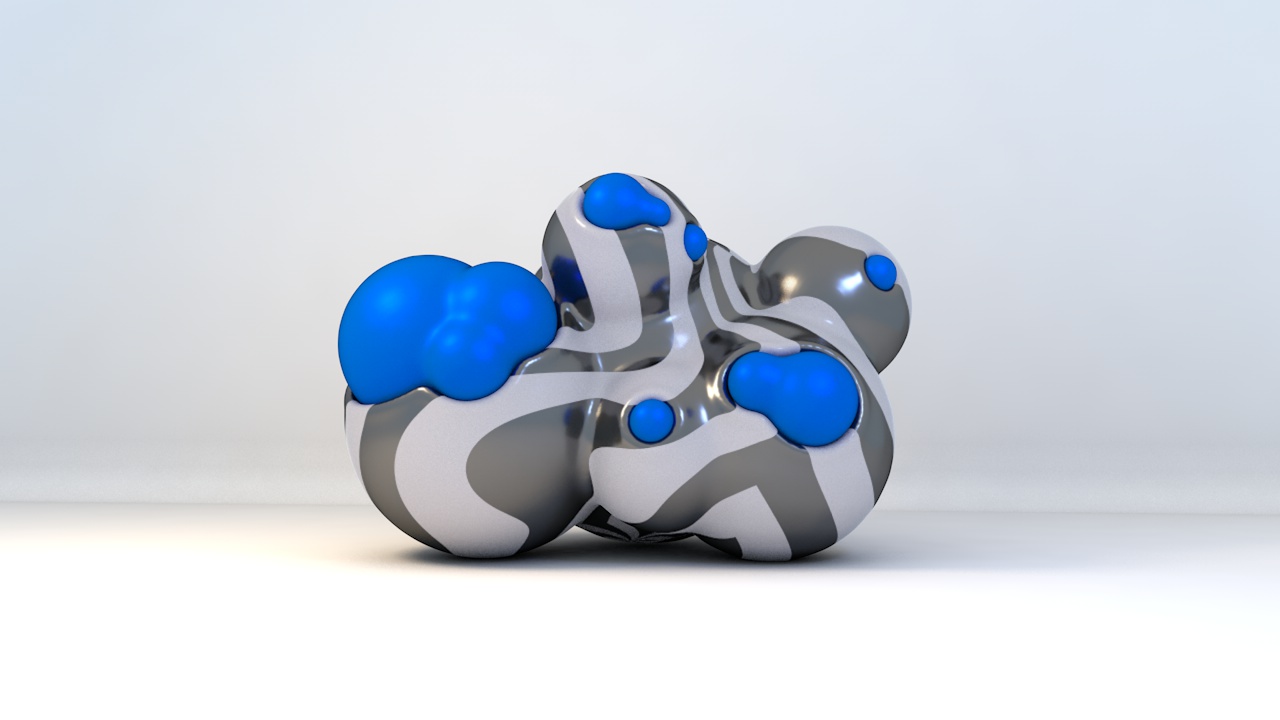-
Posts
2,052 -
Joined
-
Last visited
-
Days Won
119
Content Type
Profiles
Blogs
Forums
Gallery
Pipeline Tools
3D Wiki
Plugin List
Store
Downloads
Everything posted by HappyPolygon
-

Node system and Hair, Cloth, Fields, Vertex Maps, Selection Tags,..
HappyPolygon replied to poly's topic in Nodes
I haven't seen any procedural garment creation with any existing app. Do you have real reference of what you describe ? You can use Fields in conjuction with Vertex Maps to influence extrusion effects but not in the context of SceneNodes as they do not support Fields, and certainly not in the context of a dress. Deformers like the Bevel cannot help you because they do not support Fields, the Cloth Surface also does not support fields, the MoExtrude will extrude only individual polygons, so your only solution is the new Thickener Generator that supports both fields and vertex maps. -

Update on various DCCs and CG technologies. (March) - Regularly Updated
HappyPolygon replied to HappyPolygon's topic in News
*BUMP* Added Cesium plugins for UE5, O3DE, Unity, Omniverse RandoMixer Blender 3.5 3DCoat 2023 3DCoatTextura 2023 Maya 2024 3DS MAX 2024 MAXON ONE Spring Release -
-

3D Vehicle Challenge - Pwnisher's latest challenge
HappyPolygon replied to HappyPolygon's topic in Discussions
-

3D Vehicle Challenge - Pwnisher's latest challenge
HappyPolygon replied to HappyPolygon's topic in Discussions
-

3D Vehicle Challenge - Pwnisher's latest challenge
HappyPolygon replied to HappyPolygon's topic in Discussions
-
We would like to invite you to participate in the Hum3D competition "Sci-Fi Industrial Zone". In this rendering challenge, your goal is to create a detailed and atmospheric environment with elements of science fiction and industrial design. Your scene could be set in space, on a space station, in a massive manufacturing plant, a power station or a high-tech space refinery. We're looking for a scene that feels like it's straight out of a science fiction film - full of intricate machinery, dark and moody lighting, and plenty of technological detail to capture the viewer's imagination. Your scene can include any vehicles, characters, buildings, and can be set outdoors or indoors. The use of third-party assets or pre-made models is permitted. The online event will run from 21 March to 3 June, with the submission deadline on 3 June and the results day on 20 June. You can find out more and see the rules at https://hum3d.com/scifi-industrial-zone/.
-

3D Vehicle Challenge - Pwnisher's latest challenge
HappyPolygon replied to HappyPolygon's topic in Discussions
A speedrun from the fist place competitor -
There are some upscale AI apps out there even free ones but i'm not monitoring them so I can't tell or sure if they could go so far up to the 8K resolution.
-
Did you try the 360 app in Nvidia ? This is true. It probably has to do with the training data set. I don't think the ever sold it as imaginative though, in contraty I think the purpose of the tool was to create realistic depiction from vague sketches.
-

Import a video for reference in figure animation?
HappyPolygon replied to rasputin's topic in Cinema 4D
I haven't tried this for video but for reference imaging you go to your Viewport's Options -> Configure -> Back There you can set a background image with any amount of transparency. This only works for a non-perspective Camera Viewport. Maybe it will work for video also. -
Better post a new question topic to catch the eye of those who know Blender
-

3D Vehicle Challenge - Pwnisher's latest challenge
HappyPolygon replied to HappyPolygon's topic in Discussions
TOP 100 -
Sounds like an NFT plugin. Cairyn had one here https://cairyn.gumroad.com/l/CollieVariantGenerator And there was one similar here https://www.3dtoall.com/asset-juggler
-

Update on various DCCs and CG technologies. (March) - Regularly Updated
HappyPolygon replied to HappyPolygon's topic in News
*bump* Added Nvidia and Shutterstock to build AI text-to-3D service Silo 2023.2 Substance 3D Modeler 1.2 FumeFX 6.0 for 3ds Max Unity AI Photoshop 24.3 Magic Squire 7.0 -
There's a simpler way for this. You model your object the usual way and then you just put it under the Voronoi Fracture. If you use the Matrix Object in Grid mode as a Point Generator you get brick-like pieces. Then, using Effectors, Deformers or Capsules you can bevel the edges or distort the surface or whatever of each brick. If you need a custom brick, in the Cloner, go to Grid Mode -> Form -> Object. But it wont give you the LOTR results, it's used mostly for "voxelized" stylization.
-
Like this ? orbits.c4d
-
No one can 😆.
-
Title: Procedural 3D Modeling Using Geometry Nodes in Blender Secondary Title: Discover the professional usage of geometry nodes and develop a creative approach to a node-based workflow Review "I have had the pleasure of working with Siemen Lens on various visualization projects, from furniture visualization to visualizing biotech installations, where moving elements were also particularly important. Siemen is always looking for ways in which a visualization can still be improved, preferably by harnessing the processing power of a platform, making maximum use of parametric functions and Geometry Nodes. As a result, he achieves the desired visualization faster. What is particularly striking is that Siemen repeatedly manages to have enough info with a small briefing to realize a professional rendering. Siemen thinks visually and can effortlessly translate this into a strong way of working out graphics within a parametric environment. With this book, he shows the thinking frameworks you need to get to a result quickly. Always seen from a practical angle, Siemen takes you into the world of Blender" About the Author Siemen Lens is a CG Artist who excels at photorealism. He studies Multimedia in Antwerp. His specialty is to create abstract yet photorealistic renders using Geometry Nodes, Physics, Texturing, and various other techniques in Blender. He also uses other software like After Effects, Illustrator, and Vegas Pro. Siemen has worked as a product render designer in a Furniture company. He has also worked at PartydoosMedia, a Dutch digital graphic design agency. His goal is to create visually convincing CG Art that is pleasing to the eye. With this book, he aims to get you well versed with Geometry Nodes. ASIN : B0BJ7FLZ5S Publisher : Packt Publishing; 1st edition (March 17, 2023) Publication date : March 17, 2023 Language : English Print length : 282 pages https://www.amazon.com/Procedural-Modeling-Using-Geometry-Blender-ebook/dp/B0BJ7FLZ5S?asin=B0BJ7FLZ5S&revisionId=f7ad7397&format=1&depth=1
-

How to convert texture into a vertex color tag? (+ point cloud rendering)
HappyPolygon replied to a topic in Cinema 4D
I had answered a similar question here You can see the example here vertex to texture.zip Take a look at it and ask for clarifications if something is hard to understand. As for having the point cloud project color on nearby surfaces I don't think that is possible. You can assign points or particles to fields but the color is not transferred to the Fields. Fields are meant to transfer color to other entities and not the other way around. So you'd need to group your points based on their color and assign them as fields with color. Of course this is not possible to do manually if there are dozens of colored points... I'm not sure if it's possible to take the color from each point of the vertex map and assign it to a number of objects like omni light instances for example... So you could fake that color projection... -
I found out that it's not only the geometry that kills render time but also alpha maps on textures for leafs.
-
-

Future Shock Part 2 (Wonder Studio for the VFX Artist)
HappyPolygon replied to 3D-Pangel's topic in Discussions
It does provide a "Clean Plate" function. I dread the moment when everyone will be capable of replacing themselves with demo characters or ready-made characters. I think this app will be mostly used for recreational purposes rather than professional work. Teenage TikTokers, game streamers and youtubers everywhere will be using it.

